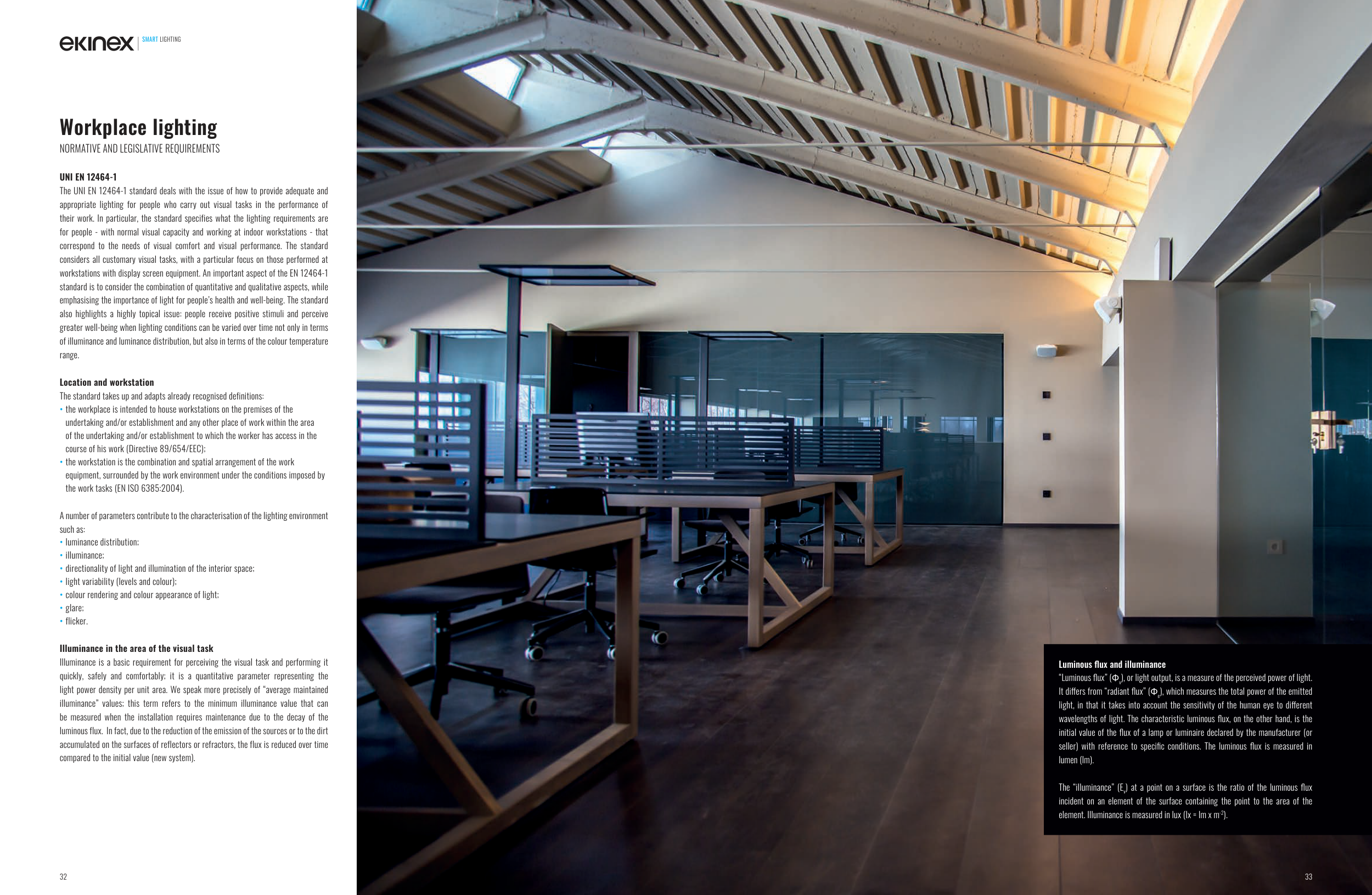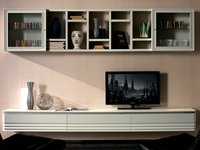UNI EN 12464-1
The UNI EN 12464-1 standard deals with the issue of how to provide adequate and
appropriate lighting for people who carry out visual tasks in the performance of
their work. In particular, the standard specifies what the lighting requirements are
for people - with normal visual capacity and working at indoor workstations - that
correspond to the needs of visual comfort and visual performance. The standard
considers all customary visual tasks, with a particular focus on those performed at
workstations with display screen equipment. An important aspect of the EN 12464-1
standard is to consider the combination of quantitative and qualitative aspects, while
emphasising the importance of light for people’s health and well-being. The standard
also highlights a highly topical issue: people receive positive stimuli and perceive
greater well-being when lighting conditions can be varied over time not only in terms
of illuminance and luminance distribution, but also in terms of the colour temperature
range.
Location and workstation
The standard takes up and adapts already recognised definitions:
• the workplace is intended to house workstations on the premises of the
undertaking and/or establishment and any other place of work within the area
of the undertaking and/or establishment to which the worker has access in the
course of his work (Directive 89/654/EEC);
• the workstation is the combination and spatial arrangement of the work
equipment, surrounded by the work environment under the conditions imposed by
the work tasks (EN ISO 6385:2004).
A number of parameters contribute to the characterisation of the lighting environment
such as:
• luminance distribution;
• illuminance;
• directionality of light and illumination of the interior space;
• light variability (levels and colour);
• colour rendering and colour appearance of light;
• glare;
• flicker.
Illuminance in the area of the visual task
Illuminance is a basic requirement for perceiving the visual task and performing it
quickly, safely and comfortably; it is a quantitative parameter representing the
light power density per unit area. We speak more precisely of “average maintained
illuminance” values; this term refers to the minimum illuminance value that can
be measured when the installation requires maintenance due to the decay of the
luminous flux. In fact, due to the reduction of the emission of the sources or to the dirt
accumulated on the surfaces of reflectors or refractors, the flux is reduced over time
compared to the initial value (new system).
Workplace lighting
NORMATIVE AND LEGISLATIVE REQUIREMENTS
Luminous fl ux and illuminance
“Luminous fl ux” (Φv), or light output, is a measure of the perceived power of light.
It diff ers from “radiant flux” (Φe), which measures the total power of the emitted
light, in that it takes into account the sensitivity of the human eye to diff erent
wavelengths of light. The characteristic luminous fl ux, on the other hand, is the
initial value of the flux of a lamp or luminaire declared by the manufacturer (or
seller) with reference to specifi c conditions. The luminous fl ux is measured in
lumen (lm).
The “illuminance” (Ev) at a point on a surface is the ratio of the luminous fl ux
incident on an element of the surface containing the point to the area of the
element. Illuminance is measured in lux (lx = lm x m-2).
SMART LIGHTING
32
33







